Learn how you can Unlock Limitless Customer Lifetime Value with CleverTap’s All-in-One Customer Engagement Platform.
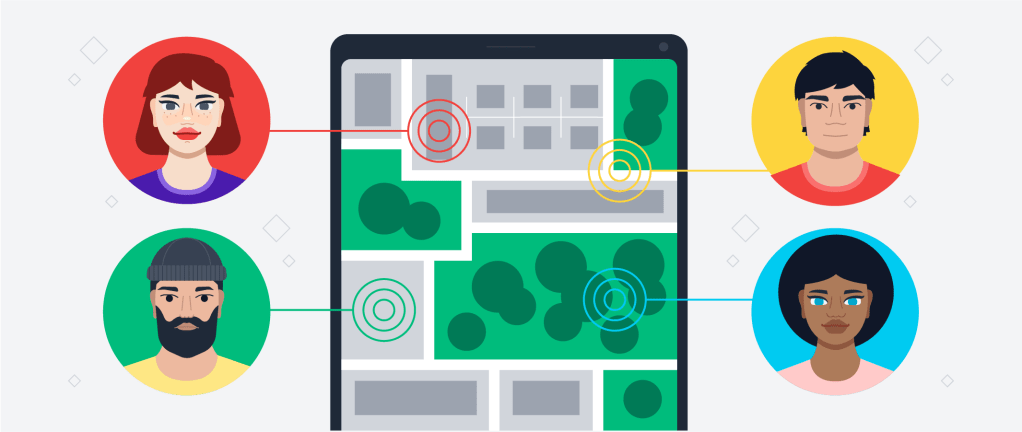
In today’s society, where instant gratification reigns supreme, mastering location-based marketing is crucial for any marketer. This strategy enables businesses to connect with consumers on a deeply personal level simply by leveraging their physical whereabouts.
Location-based marketing allows marketing teams to target their ideal customers based solely on proximity, guiding them seamlessly from discovery to purchase. Moreover, it facilitates engagement and fosters customer retention, making it an indispensable tool in any marketer’s arsenal.
In this comprehensive guide, we delve into the essence of location-based marketing, its mechanics, and strategies for crafting impactful customer experiences. Additionally, we showcase five compelling examples of brands effectively employing location-based marketing to achieve remarkable success.
Location-based marketing is a marketing strategy that uses a range of techniques — think push notifications (except it’s a location based notification) — to target users with relevant and timely content and services based on their device’s previous and current location.
Often referred to as geomarketing, there are two popular types that marketers can use to help increase engagement and sales:
Now that you know the difference between geofencing and geotargeting, let’s examine the difference between location-based marketing and proximity marketing.
While often used interchangeably, location-based marketing targets users across a broader geographical area, whereas proximity marketing employs a more precise, granular approach. Utilizing advanced technologies like beacons and NFC, proximity marketing tracks users’ exact locations without relying on geofences. This method focuses on users in close proximity to a venue and considers their historical purchasing habits, offering marketers a powerful tool for targeted engagement.
How can marketers turn location data into opportunities to influence customers, clicks, and conversions? This is a common question and it’s generally followed by another: How can I send a timely promotional offer that users find valuable rather than annoying?
Let’s first look at four important marketing goals that should be included in your location-based marketing strategy.
We’ve used six real-life examples and ways that you can use location-based marketing to create meaningful encounters with target customers that not only capture their attention but also prompt interactions and passersby to tap and convert.
In a joint study by Forbes and Treasure Data, 74% of consumers polled said they are influenced to buy from a brand based on just the shopping experience*. While there are thousands of similar studies and statistics available, they all have one thing in common: a great customer experience is the backbone of a business and a successful marketing strategy.
Here are three brands and takeaways to demonstrate how location-based marketing can improve the customer experience.
Brand example: Google Maps
When is a user most likely to offer useful feedback? When an interaction with a brand comes to a close. The customer is reflecting on how they feel about their recent experience. One tech brand that leverages this well is Google Maps.
As you can see in the below example, Google Maps has sent the customer a proactive prompt to rate their visit to a local establishment once they’ve detected the user has completed their interaction there, based on device location. Rather than include a form to fill out, or boxes to fill in, the star option is quick and effective. This is the time to engage with a captive audience.
Key takeaway: Offer customers the opportunity to share how they feel at a critical moment, i.e., after they experience what your brand has to offer. Even if it’s a negative review, real-time feedback is an opportunity to understand your customers and improve their experience.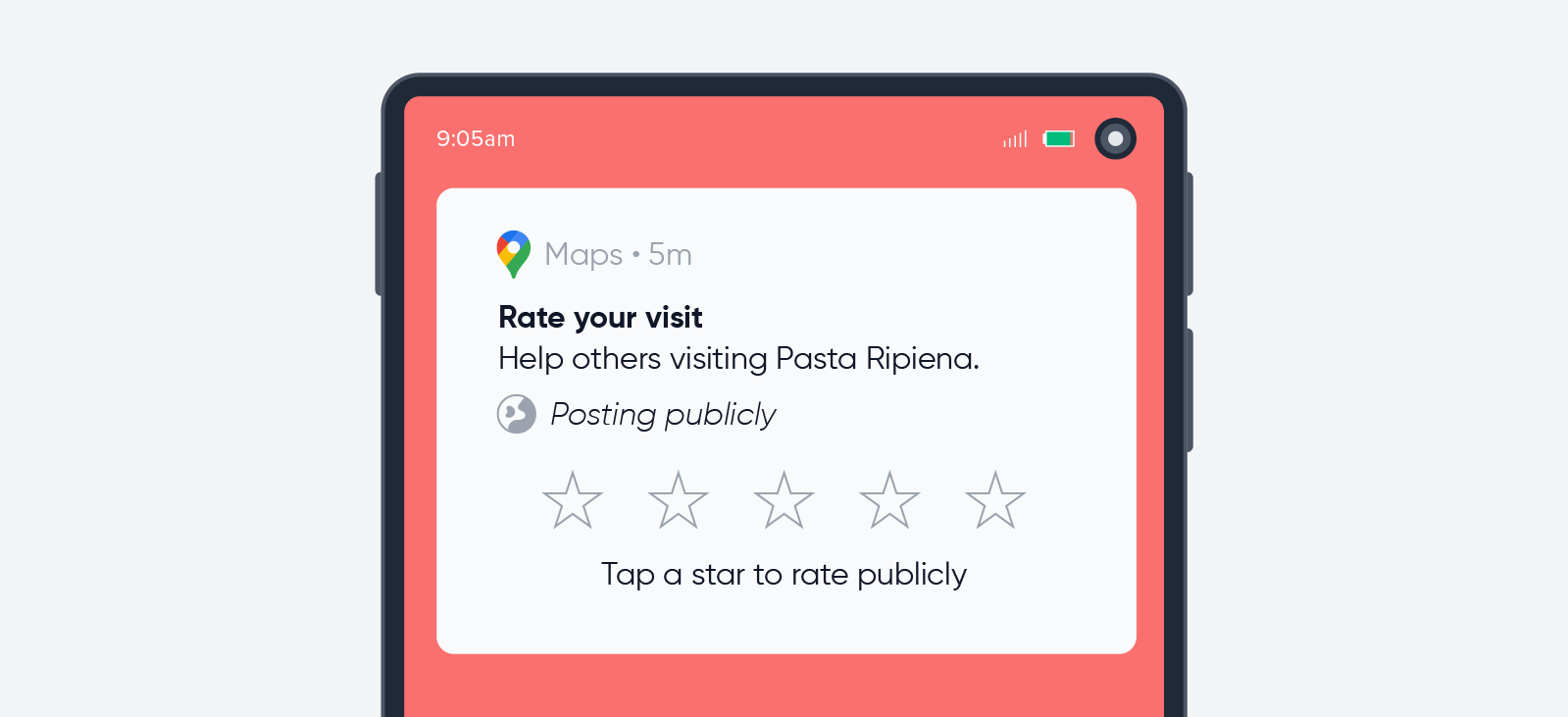
When you think about the user journey, whether it has one, two, or 10 touchpoints, it’s essential that you remove any unnecessary friction and frustration for the user. After all, if at any point branded content is irrelevant, uninteresting, or ineffective to a user, that journey is broken.
This is where brands can use location-based marketing to help a user find exactly what they are looking for at the moment they are looking for it.
Brand example: Yelp
A local push recommendation based on location ticks two important boxes: it’s personalized and tailored to the user’s immediate preferences. This can help with short-term and long-term user retention. If a Yelp user receives a valuable recommendation in one city, it’s likely that they’ll look to the same brand to offer up a similar recommendation on their next adventure.
For brands that don’t have access to Yelp’s extensive restaurant database, don’t be put off. Regardless of whether you have connections to one or 100 recommendations, this approach shows users value — in and out of the app.
Key takeaway: Never miss an opportunity to assist a user by offering helpful resources. Map out your app’s user journey and find ways to offer value, big or small, at every step.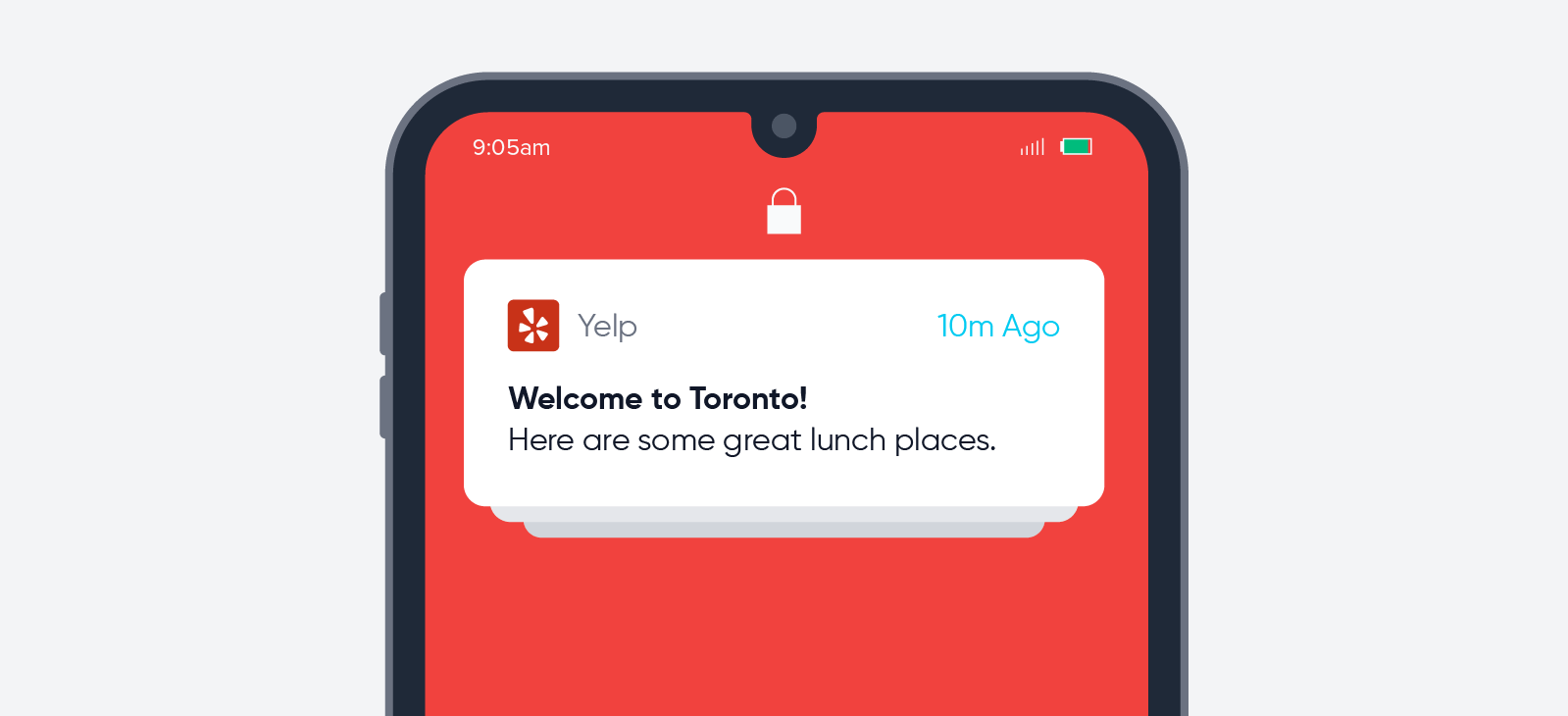
Brand example: GasBuddy
Thanks to location intelligence, brands can connect with local foot traffic and encourage crowds to navigate straight toward a store or gas station based on their current location. In this example, GasBuddy shows value to its users through a data exchange approach. App users have the option to share their location and how much they pay for fuel.
In exchange, GasBuddy reveals gas stations nearby with better deals. This might be one of the reasons that the app reached number one in the Apple App Store in May 2021*. Geofencing provides a myriad of opportunities to steer the right people in the right direction at the right time.
Key takeaway: Implement a valuable exchange for your users and make the most of the location-based data that is available as a result. Find out the real-time needs of your customers and guide them to a relevant solution that saves them time or money.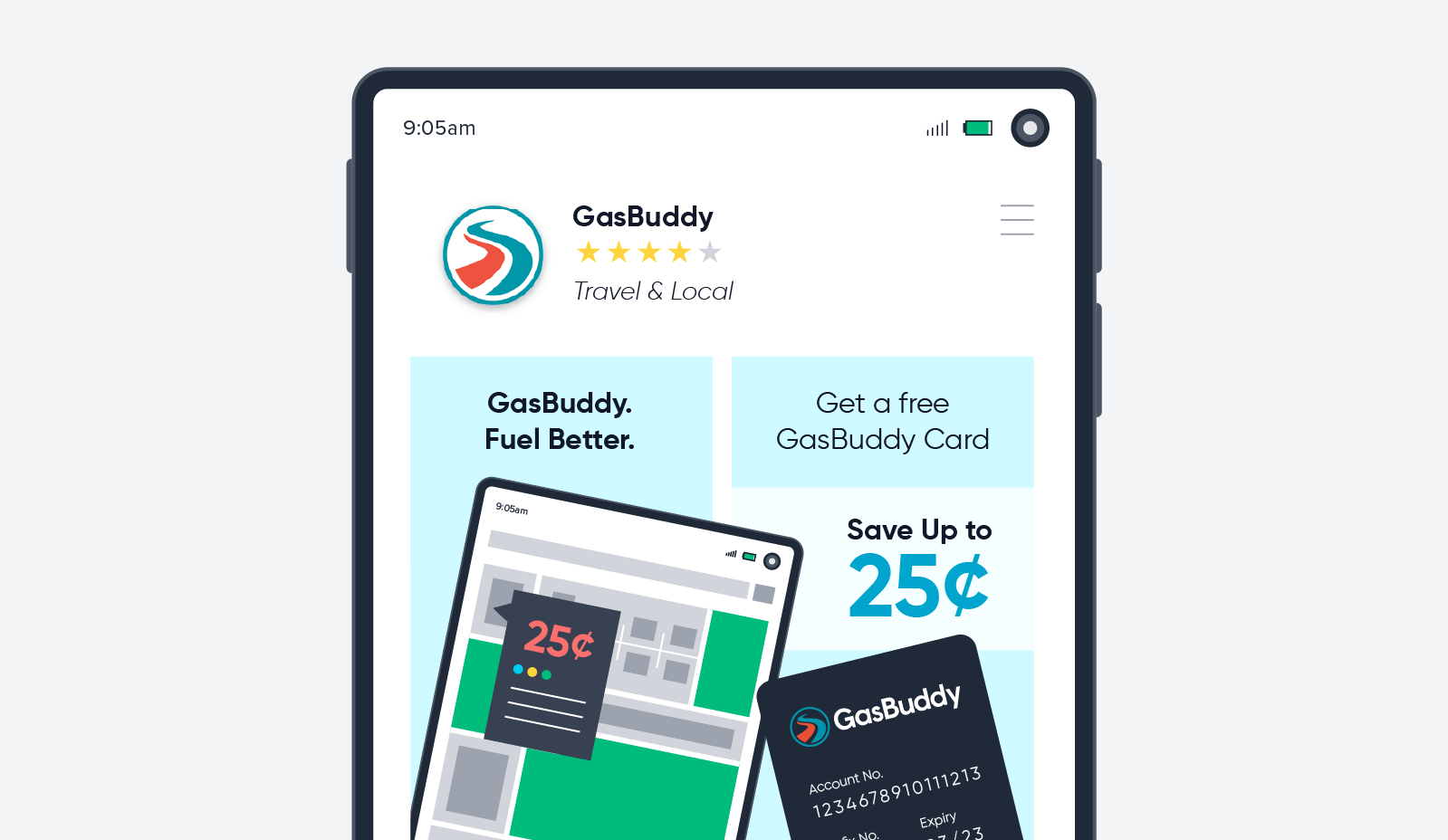
As more stores open their physical doors again, it’s inevitable that foot traffic will increase. Since the beginning of 2021, retail foot traffic increased by 12.5% YoY*.
This means that location-based marketing can, and will, prompt more in-store visits, interactions, and purchases. By sending a promotional message when an app user passes by a store, you have a good chance of enticing them to enter.
One way to do this: push messages. All customers, regardless of location, will receive this timely, relevant offer. Check out how Sephora did this.
Brand example: Sephora
Who doesn’t want free stuff, particularly from a popular store like Sephora? For app users within a certain radius of a nearby store, this is the type of push message that might appear. The hope is that this incentive will not only drive in-store traffic, but also increase the likelihood of a full shopping cart.
This tempting offer taps into two key things: It’s concise and it highlights how an in-person experience will add value in multiple ways.
Key takeaway: Demonstrate to nearby customers the added value of an in-store visit. Highlight the convenience and the offer in a compelling, engaging way.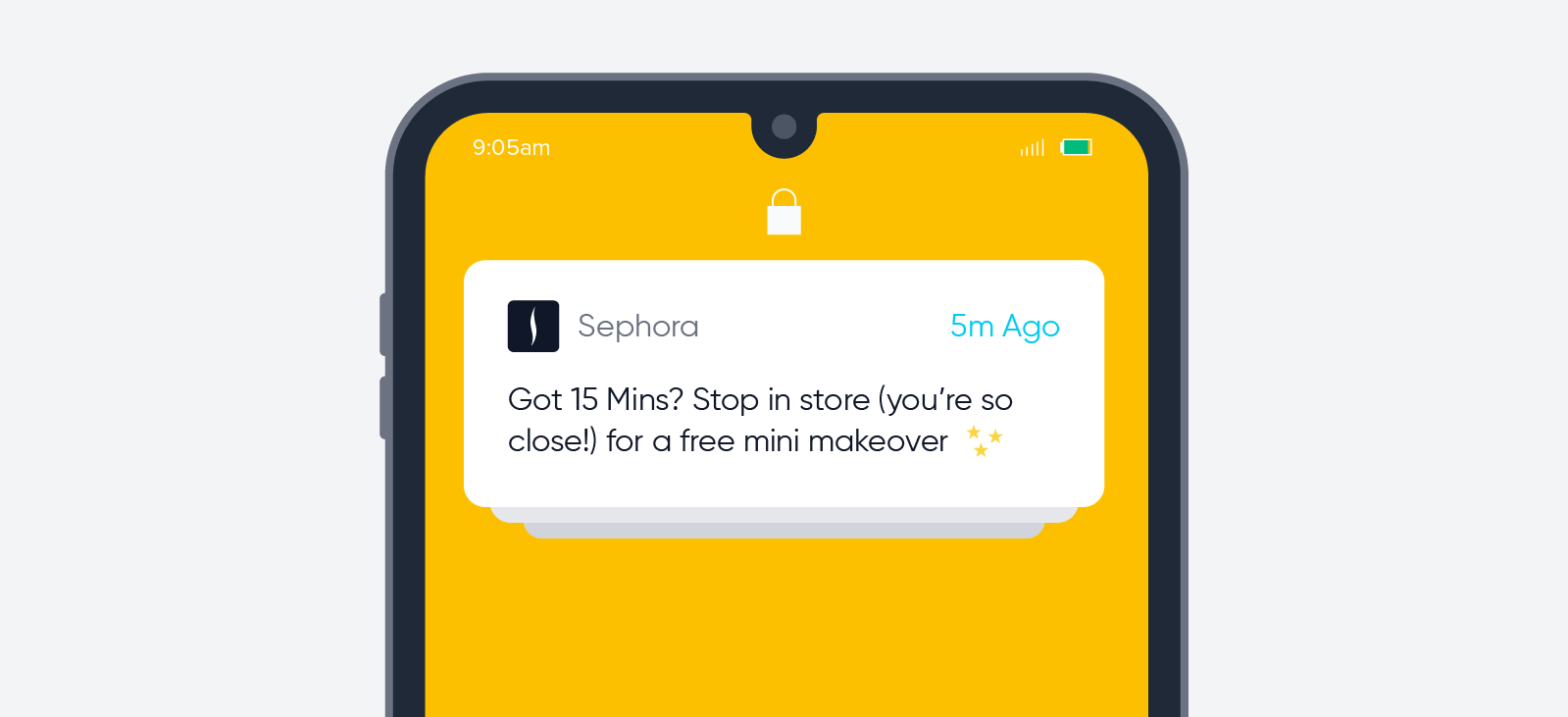
When it comes to location-based marketing, personalization is key. However, it’s not enough to just send a great, personalized message to users. You have to analyze and test what triggers work for your users in real time and which actions are likely to drive transactions. A tactic that has a good track record is highlighting the urgency of a transaction.
Brand example: Uber
The below example from Uber does two things well: it acknowledges an immediate need for its service and it presents an urgent reminder that hesitating could run the risk of a price increase. No one likes to pay more than necessary so make note of this fact and engage app users with custom offers and location based messaging.
Key takeaway: Meet user needs as soon as they happen. Include relevant, urgent information in your location-based notification so a user has everything they need to make an informed transaction.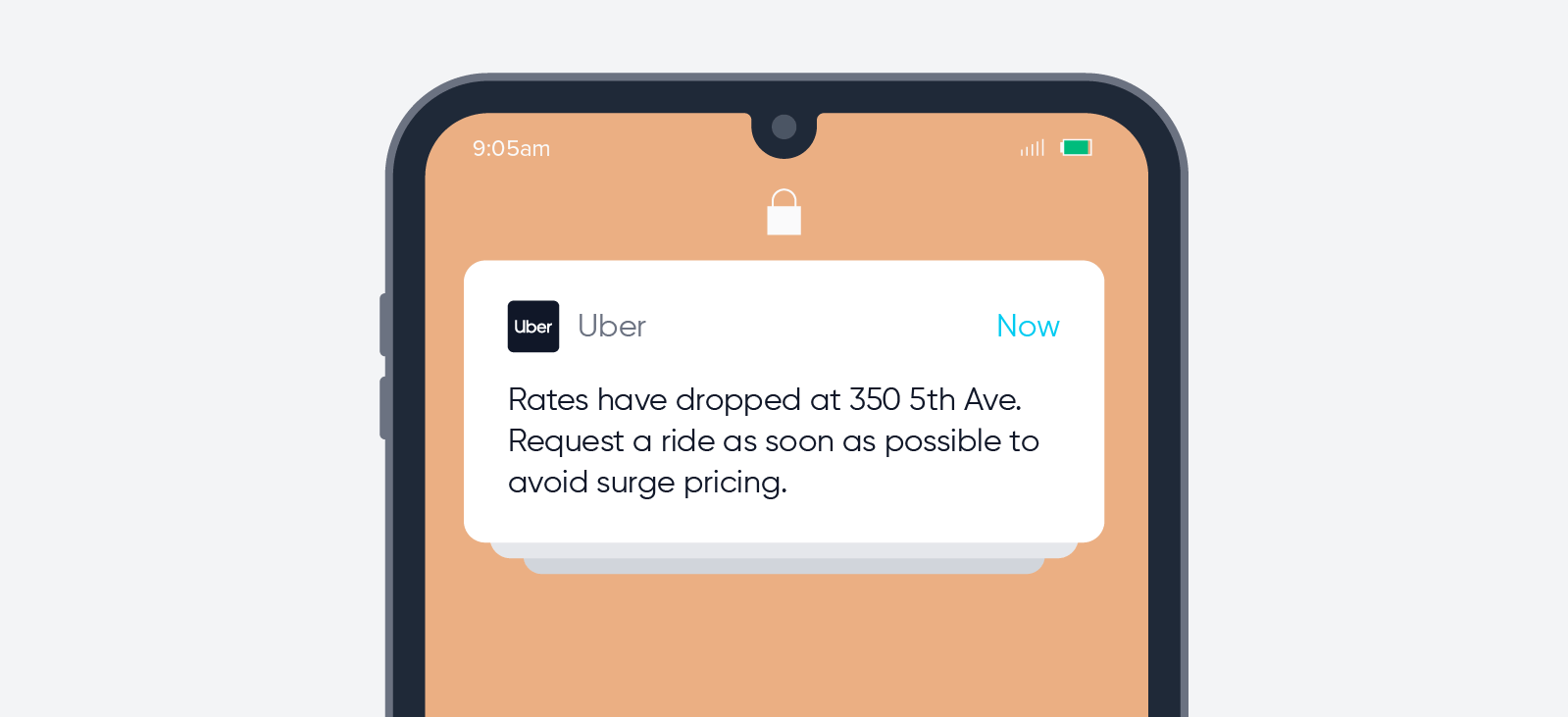
If you’re after repeat customers, enriching customer journeys with real-time recommendations is a good place to start. In other words, close the loop with retargeting.
In today’s technology-driven world, the number of touchpoints is vast. Although this might seem overwhelming, beginning with location intelligence for accuracy, followed by a scaled approach across email, social media, and mobile, will help build trust with users and those meaningful encounters we referenced earlier. Capitalize on this momentum by creating a bridge between online and offline moments.
Brand example: Ticketmaster
Event apps are a prime example of brands looking to bridge offline and online moments.
If a user enjoyed their time at your concert, festival, or event, it’s likely that they’ll be interested in new music from the bands involved. That’s where this Ticketmaster example works. It reminds the user about the great experience they had at the festival (offline) while also connecting them with valuable information in the present, like a Spotify playlist (online).
Key takeaway: Identify ways to connect online and offline experiences. Remind users about the value that both moments bring to their past and present needs.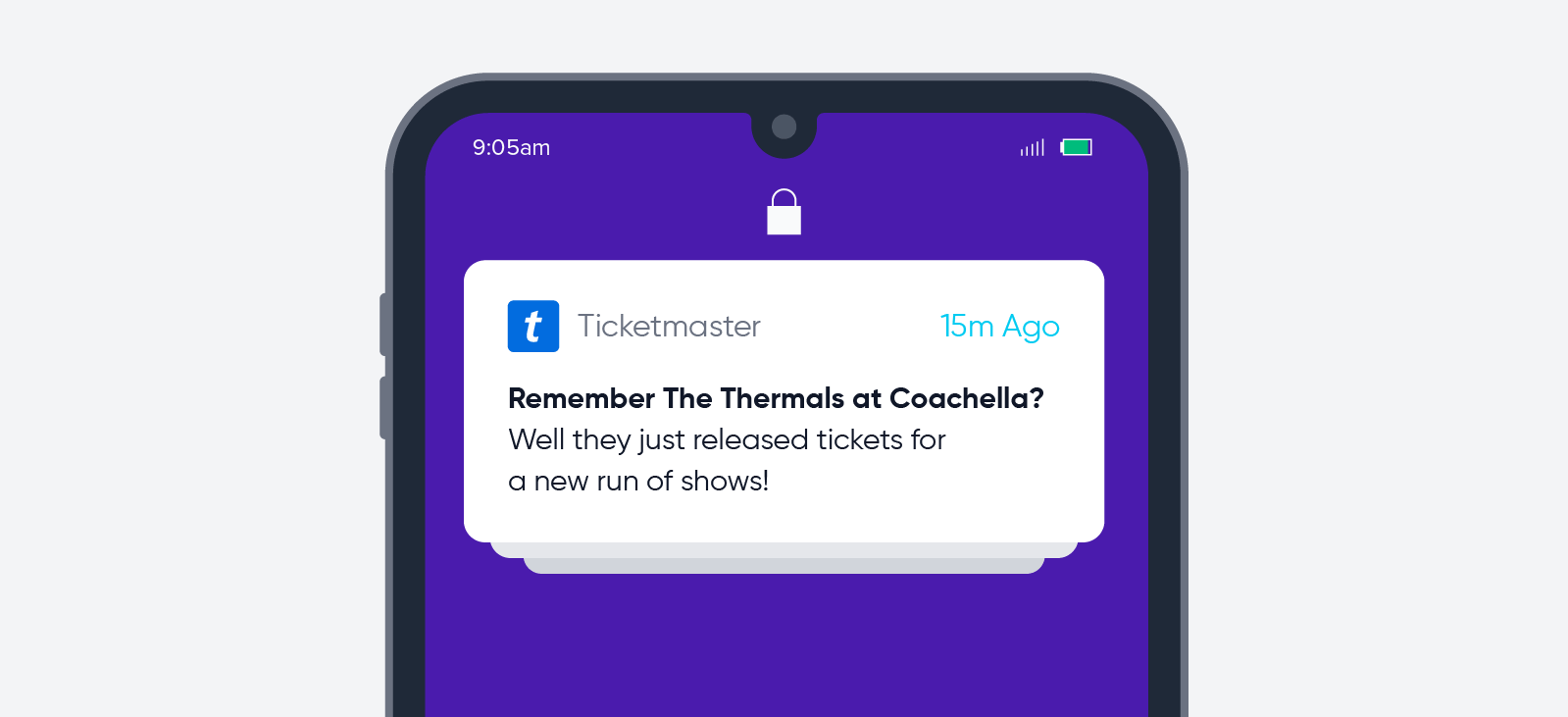
It’s been almost three months since Apple officially updated its software with a rather important industry-changing feature: iPhone users now receive an App Tracking Transparency (ATT) prompt from apps and websites that asks for permission to share their device’s identifier for online tracking.
With that, you might be wondering, how will this privacy update affect opt-in rates? Verizon-owned measurement firm, Flurry Analytics, shared its estimates in May 2021: opt-in rates in the U.S. are less than 5%*.
While it’s true that low opt-in rates add an extra hurdle for marketers, location-based marketing can, and will, continue to be widely used.
It’s fair to say that it’s an app user’s world. It might seem like common sense, but engaged users expect and deserve personalized experiences, information, and moments, and this absolutely applies to location-based marketing. Because what is location based marketing, but a tool that reaches out to your target audience based on where they stand.
If you’re new to location-based marketing, this guide and the infographic below will help you maximize these experiences and moments at every step of the user journey. And check out CleverTap for a location based platform for marketers.

See how today’s top brands use CleverTap to drive long-term growth and retention